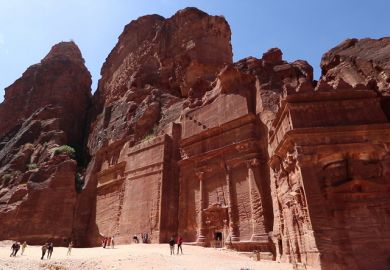The significance of King Croesus's gold is not that he had so much of it, but that he wanted it pure. His kingdom, Lydia, became synonymous with gold. The Lydians invented money, striking coins from electrum, a gold-silver alloy occurring naturally near the capital, Sardis. But this was not good enough for Croesus.
Andrew Ramage and Paul Craddock investigate Croesus's gold-refining operation from the results of Ramage's excavations at Sardis. Ramage details the excavations and the scientific investigation draws on contributions from experts at the British Museum and Istanbul University. Craddock attempts to reconstruct the Lydians' technique but readers expecting a scientific and archaeological synthesis extending to economics and social organisation will be disappointed. This is a technical report.
The contributors bring authority to the interpretation, but the hands-off editorial treatment results in a book of parts. The muddled feel is not helped by the layout. Ramage sets the scene with a well-written and concise summary of Sardis in context. But we have to wait until chapter four for a detailed discussion of the excavation, making way for Craddock's "historical survey of gold refining".
This two-chapter excursion provides a dizzying tour across much of the globe and 2,500 years of history. The survey is comprehensive but does not benefit from clarity. To be fair, there seems little doubt from the results of the subsequent scient-ific examination that strong similarities exist between the technology employed at Sardis and later medieval practice. But how far can the analogy be taken? The treatment is true to a long tradition in archaeo-metallurgy in which historical and ethnographic analogy run free of the constraints imposed by modern anthropological scholarship.
Following chapters take us into the scientific investigation. Nigel Meeks's work is particularly thorough and well presented. Other members of the British Museum team contribute on related metallurgical debris and the coins themselves. What unfolds is a comprehensive picture of the processes involved.
The closing part of the book is a little disappointing. A short chapter diverts us to a history of gold-parting experiments, another seems to replicate the British Museum work in less detail.
Generally high standards slip in a few places. Craddock suggests that the presence of inclusions of Platinum Group Elements (PGEs) in the gold prove that it came from placer deposits rather than primary sources. They do not. The PGEs discussed (osmium, iridium and ruthenium) are all found in association with gold in primary deposits in the region. It is also claimed that the absence of these metals in some of the refined gold shows that it was recycled and cupelled before refining. Basic thermochemical calculations show that such a process could have no effect on these least reactive of elements.
Paul Budd is honorary fellow in archaeology, University of Durham.
King Croesus' Gold
Author - Andrew Ramage and Paul Craddock
ISBN - 0 7141 0888 X
Publisher - British Museum Press
Price - £45.00
Pages - 2
Register to continue
Why register?
- Registration is free and only takes a moment
- Once registered, you can read 3 articles a month
- Sign up for our newsletter
Subscribe
Or subscribe for unlimited access to:
- Unlimited access to news, views, insights & reviews
- Digital editions
- Digital access to THE’s university and college rankings analysis
Already registered or a current subscriber? Login



